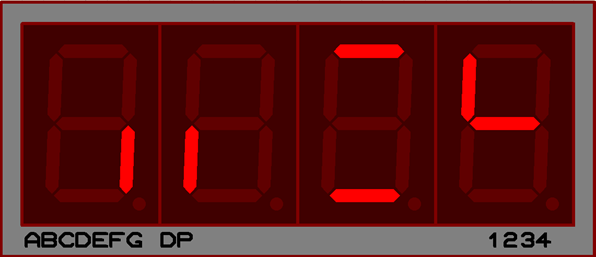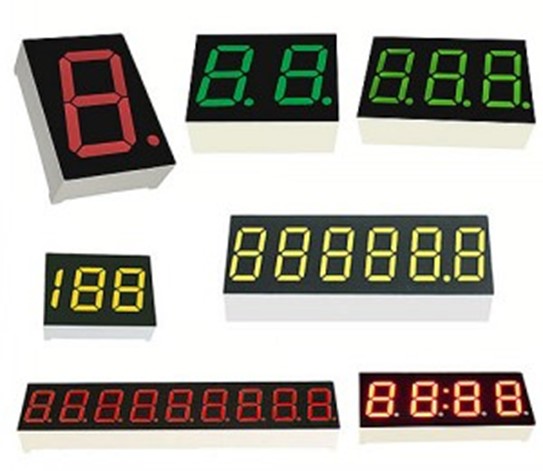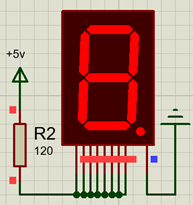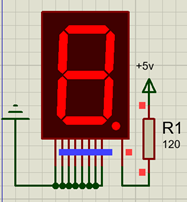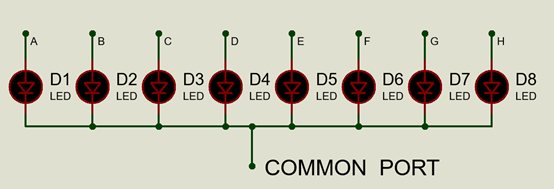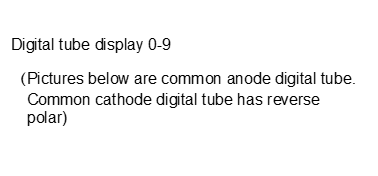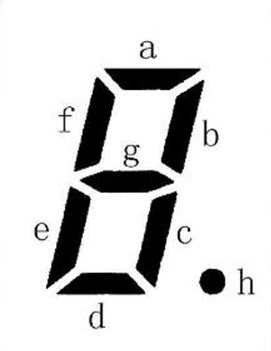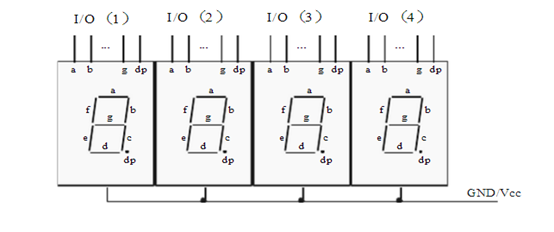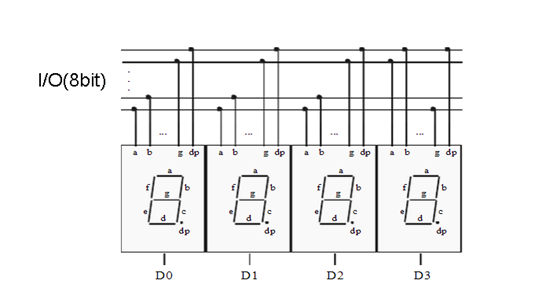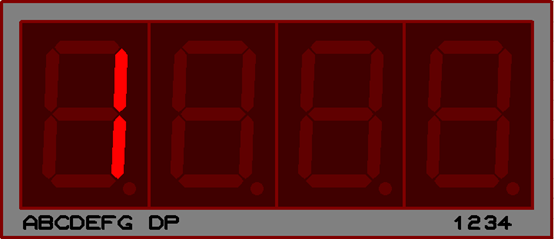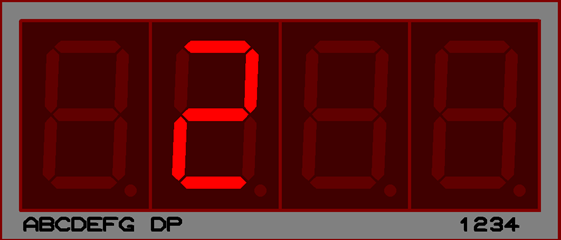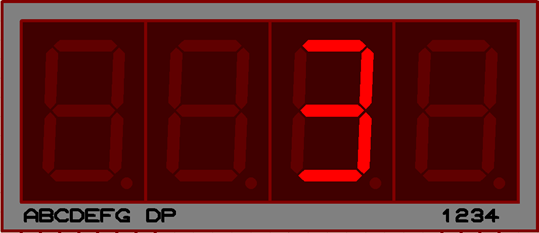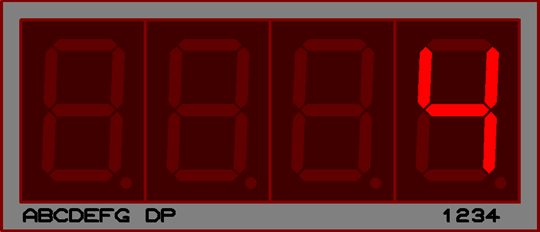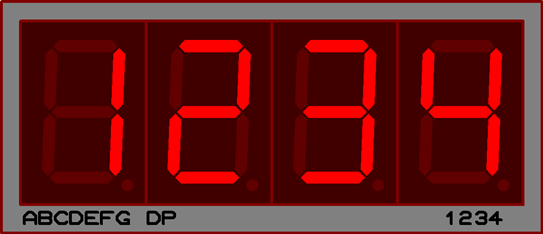
Get to Know Chip Resistance
July 29, 2017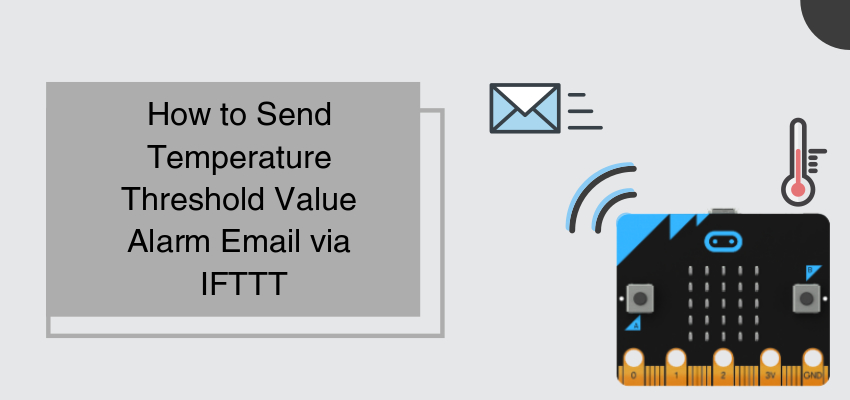
How to Send Temperature Threshold Value Alarm Email via IFTTT
May 14, 2018
Digital tube is a semiconductor light emitting device. According to the connection of light emitting diode unit, it can be divided into common anode digital tube and common cathode digital tube. According to the driving method of digital tube, it can be divided into two categories:static and dynamic.
Key words: digital tube/ dynamic display/common anode/common cathode
Digital tube is a semiconductor light emitting device. The basic unit is light emitting diode. According to its segment, it can be divided into seven-segment digital tube and eight-segment digital tube. Compared with seven-segment digital tube, eight-segment digital tube have an extra light emitting diode unit(a decimal point display).
Led digital tube (LED Segment Displays) is a component made of multiple light emitting diode which forms 8-bit. Lead has been connected inside, just draw out their each stroke–public electrode. The common segment of LED digital tube is 7 except some with an extra decimal point. Another type is similar to “3+1” display mode. And there is half bit that is1, 2, 3, 4, 5, 6, 9, 10 etc..According to LED connection, it can be separated to two category: common cathode and common anode. To know these properties of LED is very important for programming. Because different digital tube has different programming method except the difference of hardware circuit. The light emitting principle of common cathode is same to common anode in spite of the difference of power polar. Usually, the light color is red, green, blue, yellow, etc.. LED digital tube is widely used to gauges, clocks, bus stations, and home appliance and so on. When selecting it, you shall pay attention to product size, color, power consumption, brightness, wave length, etc..
Divided by structure, there are common cathode digital tube and common anode digital tube:
Common Cathode Digital Tube Common Anode Digital Tube
Circuit of Common Cathode Digital Tube:
Circuit of Common Anode Digital Tube:
To make it display properly, we have to use driving circuit to drive each segment of digital tube so as to display the number we desired.
Divided by driving method, it can be separated into static display and dynamic display.
-
Static Display
Static Display means every segment of digital tube is driven by I/O port of a micro-controller or binary decoder like BCD. Advantages of static driving are easy programming and high brightness.
Why we called it “Static Display”? It is because of each segment is comparatively separated. And once the character to be showed is confirmed, the output of the relative I/O port remains until next character displayed. As with this reason, static display has comparatively higher brightness. Picture below is a 4-bit static digital tube display circuit. Each segment in the circuit can display independently. As long as you keep selection code level same on the section routing of each segment, it can display the corresponding character. Because each segment has 8-bit output port to control selection code, so every character displayed can be different at the same time. This connection is easy for programming and management but possess too much I/O resources. For example, an electronic clock (https://www.elecfreaks.com/9125.html ) shall at least contains 2 units: hour and minute. Every unit will have 2 seven-segment digital tube. If we use micro-controller to control it, then it will have the problem of wasting I/O port resources.
4-bit Digital Tube Display Circuit
-
Dynamic Display
For multiple segment display, to simplify hardware circuit, we usually connect section lines of all segments in parallel and use 8-bit I/O port to control, which forms re-usage of several section lines. Besides, each segment of common cathode or anode is control by relative I/O port line to realize separate time choose. Picture below is a 4-bit dynamic display circuit.
4-bit Dynamic Display Circuit
In this picture, section line possess 8-bit I/O port while bit line possess a “4” character I/O port. Because section lines of each segment are connected in parallel, output of selection code are the same. Thus, at the same time, if all section lines chosen, 4 characters will display the same numbers. If we want each segment display the relative character, it have to use scanning display mode, i.e. at a certain time, chose one section line in a segment and close other section lines, then the chosen section line will output the relative character code of desired number. This time, among 4-bit digital display, the chosen one segment lighted with a character while the other three stay no light. Under the same principle, in next time, choose next section line while others not chosen so that the chosen one will display the relative character while other section lines not. With circulation of this principle, we can make each segment display the number we desired. Although these characters appear in different time, there is only one character showed at a same time and others will not display. Due to the visual retention of human eyes, only if each segment display interval is short enough, it can form a illusion that multiple segment illuminated at the same time so as to reach our display requirement.
For example, we want to display1234
First time:
Second time:
Third time:
Fourth time:
When frequency is beyond 25 frame, we can see this:
To use dynamic scanning display method, we have to pay attention to the following three points:
-
When lighting, keep digital tube have the maximum regular way current. Usually, a digital tube requires 10mA. For 4-bit scanning, every digital tube has 1/4 average maximum current. Thus, when scanning, in order to get proper brightness, transient current have to be 30 mA or above, i.e. limit resistance to be 20~100???
-
When shifting into the next character display, close the former character for a period of time(about 50us), then send out scanning signal of next character in case of the former one appears the vague image of next character, i.e. to prevent “Ghost Shadow”.
Ghost Shadow:
- The frequency of scanning shall no less than 25Hz visual retention frequency(i.e. every frame under 40ms). In the process of rotate display, time of each digital tube lighted is 1~2ms. Because visual retention of human eyes and after-glow effect of diode, although actually each digital tube is not illuminated at the same time, only if the scanning speed is fast enough, thus leaves an impression of a group of steady number display. You will not feel it is flashing. Dynamic display effect is same to static effect. It can save a lot of I/O port with lower power consumption.
-





